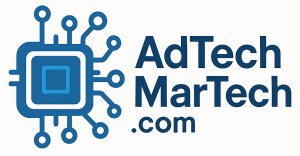In recent years, artificial intelligence (AI) has revolutionized various sectors, and content marketing is no exception. While many organizations initially embraced AI for automation—streamlining repetitive tasks or managing data—its innovative applications now extend far beyond simple efficiencies. Marketers are discovering the myriad creative ways AI can enhance content strategy, engagement, and ultimately drive results.
1. Personalized Content Creation
One of the most compelling uses of AI in content marketing is its ability to create highly personalized experiences. Advanced algorithms can analyze user behavior, preferences, and demographics, enabling marketers to tailor content specifically to individual users. This goes beyond mere segmentation; AI can generate personalized emails, landing pages, and recommendations in real time, ensuring that each piece of content resonates with the target audience.
Example: Netflix employs AI to curate personalized viewing suggestions, enhancing user engagement and satisfaction. Similarly, brands can use AI to recommend blog articles or products based on previous interactions, creating a seamless journey for users.
2. Enhanced Storytelling Through Data Analysis
AI can sift through massive datasets to identify trends and insights that human marketers might overlook. By analyzing consumer behavior, social media interactions, and market trends, AI can deliver valuable information that informs storyline development and creates compelling narratives.
Example: Brands like Coca-Cola have utilized AI to analyze social media content, allowing them to identify emerging trends and craft stories that resonate with their audience. By leveraging analytics, marketers can create timely and relevant content, enhancing engagement.
3. Intelligent Content Curation
There’s a wealth of content available online, making it challenging for brands to stay relevant. AI-driven content curation tools can help organizations filter through vast amounts of information to find the most pertinent and valuable content for their audiences.
Example: Tools like Curata employ AI to recommend articles, images, and data that align with a brand’s message. This not only saves time but also positions a brand as a thought leader by consistently sharing high-quality, relevant content.
4. Natural Language Generation (NLG)
The capabilities of AI in Natural Language Generation (NLG) have made it possible for machines to produce written content that is not only grammatically correct but also contextually appropriate. Brands can use NLG to generate product descriptions, reports, or even entire blog posts based on predetermined guidelines and data.
Example: Associated Press uses NLG software to automate the writing of financial reports, freeing up journalists to focus on more in-depth investigative pieces. Marketers can adopt similar approaches, generating routine content while allocating human resources to strategic and creative endeavors.
5. AI-Driven Visual Content Creation
Visual content plays a crucial role in capturing audience attention, and AI tools have made designing graphics easier and more accessible. AI can analyze extensive datasets to create visually appealing content tailored to audience preferences.
Example: Canva employs AI to automate design suggestions based on user intentions. This empowers non-designers to create professional-looking visuals, enhancing brand presence while maintaining consistency.
6. Chatbots and Conversational Marketing
AI-powered chatbots are transforming customer interaction by providing instant responses and recommendations. These bots can engage users in real time, offering personalized support and guiding them through the customer journey.
Example: Sephora’s chatbot on Facebook Messenger provides users with product recommendations based on their preferences and previous purchases. This immediate interaction not only enhances customer satisfaction but also drives conversion rates.
7. Sentiment Analysis for Brand Monitoring
Understanding customer sentiment is essential for effective content marketing. AI can analyze online conversations and user-generated content to gauge public opinion about a brand, allowing marketers to adjust strategies promptly.
Example: Brands like H&M have incorporated AI tools that monitor social media channels for customer feedback. Using sentiment analysis, they can quickly identify potential PR issues or capitalize on positive feedback in their marketing campaigns.
Conclusion
The integration of AI in content marketing transcends automation, enabling marketers to engage consumers in innovative and meaningful ways. From personalized content creation to intelligent curation, AI provides tools that can enhance strategy and execution. As technology continues to evolve, embracing these creative applications of AI will be crucial for brands striving to stand out in an increasingly crowded digital landscape. Marketers who leverage these advancements will not only save time and resources but also create more impactful connections with their audiences.









